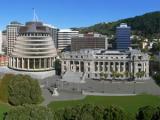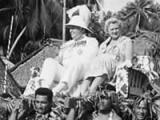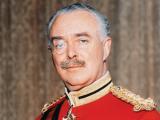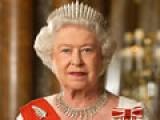The swearing-in of Dame Silvia Cartwright as New Zealand’s 18th governor-general completed a female clean sweep of the country’s most powerful political and legal positions.
Governor-general
Events In History
British-born but New Zealand-raised, Lieutenant-General Sir Bernard Freyberg was a charismatic and popular military leader who later served as governor-general.
Articles
Notes for My Successor

Until the late 1960s New Zealand's governors-general were British, mainly minor aristocrats, or admirals or generals. Read the full article
Page 1 - Tips for new Governors-General
Until the late 1960s New Zealand's governors-general were British, mainly minor aristocrats, or admirals or
Page 2 - Jobs for the boys
As the new boy would have known, it was a so-called job for the boys, a political gift. Lords Bledisloe (1930–35), Galway (1935–41) and Sir Bernard Freyberg (1946–52), for
Page 3 - Hail and farewell
The new governor-general had to make a good impression. That meant landing in the
Page 4 - Staff and servants
Lord Bledisloe (1930–35) felt that senior staff 'should be fond of dancing and of games and sport of all kinds, as these accomplishments appeal to people here I would not have
Page 5 - A home away from 'Home'
Government House in Wellington is a busy place. Every year it hosts about 15,000 guests at 200
Page 6 - Pay and perks and handy hints
The colonial government cut the vice-regal salary and allowances from £7500 to £5000 in the late 1880s, just when the declining British aristocracy was looking to the Empire to
Page 7 - The governor-general on the move
How the governors-general moved about the
Page 8 - From lieutenant-governor to governor-general
An outgoing governor-general's 'Notes for My Successor' have had their day. New Zealand governors-general already know the country and have no need to pack their household goods
Page 9 - Further information
Find out more about the governors general of New
The House of Representatives

New Zealand's Parliament dates back to 1854, just 14 years after the signing of the Treaty of Waitangi and the beginning of the European settlement of the country. For most of its history as a nation state, New Zealand has had some form of elected government. Read the full article
Page 3 - Parliament
Today there are two parts to Parliament – the House of Representatives (or the Lower House) and the Governor-General, but between 1854 and 1951 there was a third part, the
Empire Day

Empire Day (24 May), celebrated widely in New Zealand from 1903, was a major event in the viceregal calendar. Read the full article
Page 1 - Empire Day
Empire Day (24 May), celebrated widely in New Zealand from 1903, was a major event in the viceregal
Viceregal visiting

'To be invisible is to be forgotten,' constitutional theorist Walter Bagehot (1826–77) warned. For the King or Queen's New Zealand representative, the governor-general, that meant hitting the road Read the full article
Page 1 - Viceregal visiting
'To be invisible is to be forgotten,' constitutional theorist Walter Bagehot (1826–77) warned. For the King or Queen's New Zealand representative, the governor-general, that meant
Page 2 - Putting on appearances
New Zealanders loved a good viceregal do, and no one was observed more closely than Their
Page 3 - Organising a small-town do
Empire may have shrunk in the 1950s, but no one wanted to be
Page 4 - Some say yes; some say no
Like his predecessors, Sir Denis Blundell (1972–7) travelled widely throughout New
Page 5 - Recent changes
By the 1970s, the nature of viceregal visiting had changed. New Zealanders, not Britons, now held the job, so they did not need to be
Page 6 - Further information
Find out more about viceregal
History of the Governor-General

New Zealand has had a governor or (from 1917) a governor-general since 1840. The work of these men and women has reflected the constitutional and political history of New Zealand in many ways. Read the full article
Page 1 - History of the governor-general
New Zealand has had a governor or (from 1917) a governor-general since 1840. The work of these men and women has reflected the constitutional and political history of New Zealand
Page 2 - Modern duties
The governor-general's duties are divided into three functions: ceremonial, community and
Page 3 - Crown colony era
New Zealand became a British colony in 1840, legitimised by the Treaty of Waitangi and Lieutenant-Governor William Hobson's 21 May declaration of
Page 4 - Responsible government
From the 1840s settlers demanded a say in government. Governor George Grey suspended an overly elaborate constitution in 1846, but the New Zealand Constitution Act 1852 gave male
Page 5 - Splendid ornamentals
With the appointment of Lord Onslow in 1889, a new type of governor took up residence in Government
Page 6 - Regalised
The constitutional arrangements of the British Empire changed greatly between the creation of the Imperial War Cabinet in 1917 and the passing of the Statute of Westminster in
Page 7 - Patriated
Late last century, New Zealand governments patriated (indigenised) the
Page 8 - Uber diplomat?
From 1926, in accordance with decisions taken as a consequence of the Balfour Declaration, governors-general merely represented the sovereign in New
Page 9 - Further information
Find out more about the history of the
Governors and Governors-General

New Zealand has had 16 resident governors and 22 governors-general. Two early governors were called governor-in-chief. Read the full article
Page 1 - Governors and governors-general
New Zealand has had 16 resident governors and 22 governors-general. Two early governors were called
Page 2 - Selection process
In the days of the Empire, the British government appointed New Zealand's governors and governors-general. New Zealand had no say.
Page 3 - Career paths
As the job evolved over time, so did the type of person needed to govern successfully. Between 1840 and 1853, when governors ruled personally, they were junior navy or army
Page 4 - Genes, gender and age
From 1840 until 1972, New Zealand's governors and governors-general were
Page 5 - Further information
Find out more about the governors and governors-general of New
Queen Elizabeth II

Queen Elizabeth II became New Zealand's monarch on 6 February 1952, following the death of her father, King George VI Read the full article
Page 2 - Constitutional and public ceremonial roles
The Queen was New Zealand’s head of state. Her title was confirmed by Royal Titles Acts of 1953 and 1974, the latter entitling her ‘Elizabeth the Second, by the Grace of God Queen























































